Insta360 GO Ultra review: The most versatile mini action camera yet
4K60, smarter low-light, and a modular design make this the most capable GO yet

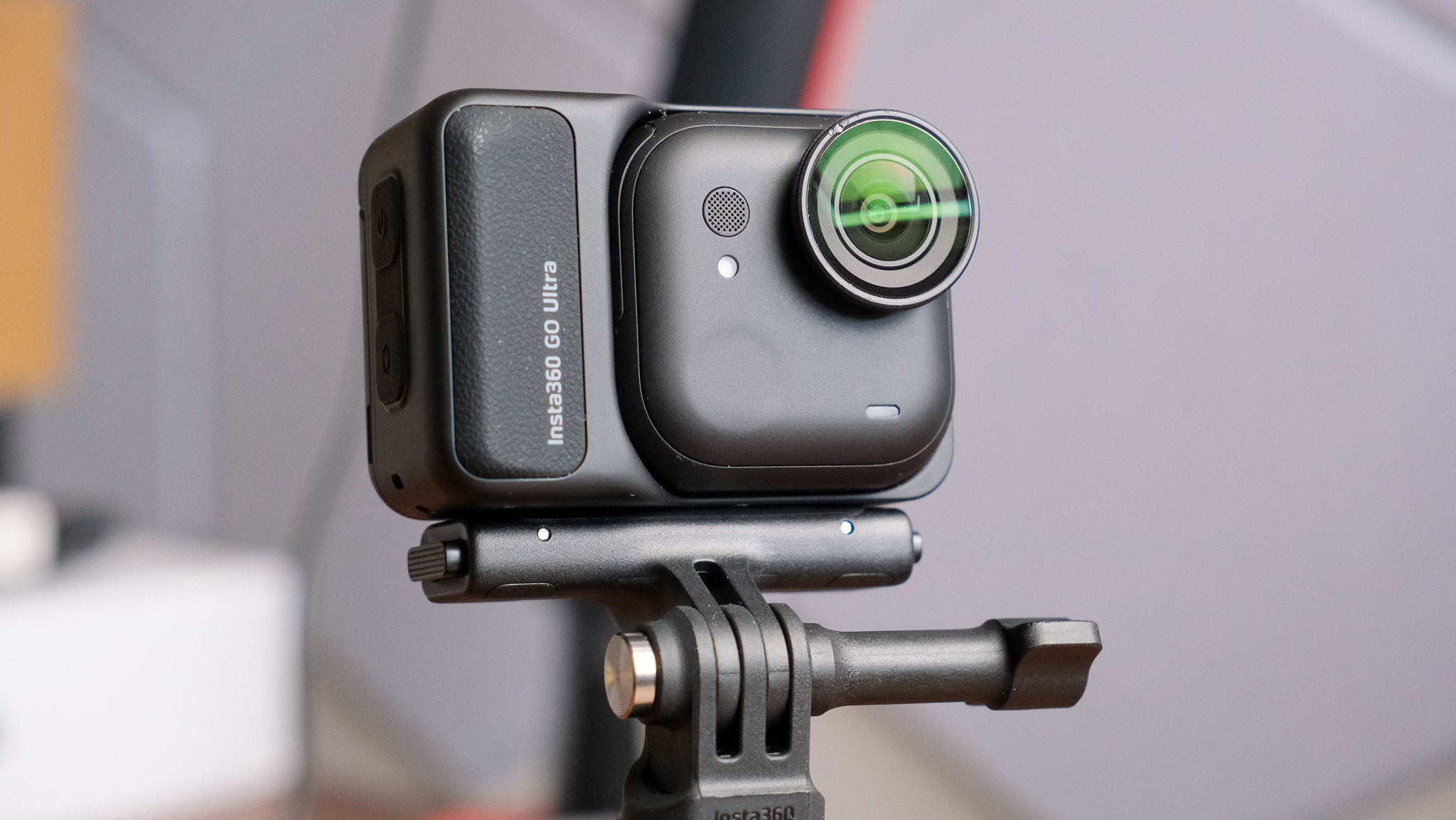
Insta360 GO Ultra packs a serious punch into a tiny, modular body. With 4K60 video, PureVideo low-light mode, and a massive boost to battery life and storage flexibility, it’s easily the most capable GO yet. Heavier and pricier than the GO 3S, but if you’re a creator looking for crisp POV footage and creative freedom, this pint-sized powerhouse is hard to beat.
-
+
4K @ 60fps video
-
+
Long battery life and quick charging
-
+
Compact camera unit
-
+
Removable storage
-
+
4K Active HDR and PureVideo Modes
-
-
Memory card is a bit fiddly to insert
-
-
Larger camera unit than GO 3S
-
-
Heavier than GO 3S
-
-
Heating issues persist
Why you can trust T3

I often cover the brand, but there is a very GOod reason for this coverage, as Insta360 just announced the latest iteration of its GO Series, the GO Ultra. The successor of the 4K-capable Insta360 GO 3S, the new model introduces heaps of updates, from a larger sensor and longer battery life to smoother footage and better low-light performance.
The camera is squarely aimed at content creators who are happy to pay the premium for better image quality and would like to use the GO Ultra for more than just basic action cam stuff. Of course (and as expected), the new Insta360 does a tremendous job at making editing of its footage more accessible to everyone, not just pros.
Is the Insta360 GO Ultra the best action camera for content creators? Depends. I know a lot of runfluencers who use GO cameras, but it’s not without caveats, especially if you want to record longer footage in higher resolutions/frame rates.
Plus, there is also an argument that for most people, the GO 3S provides more than enough functionality, making the GO Ultra a niche offering from the brand. There is no denying that, much like the company’s other products, the new camera is a lot of fun to use and experiment with, though!
Insta360 GO Ultra review
Price and availability
The GO Ultra was announced in August 2025 and is available to buy now directly from Insta360 for a recommended price of $449.99/ £389/ €429. This is for the standard Bundle, which includes the Insta360 GO Ultra, a Quick Release Safety Cord, one Magnet Pendant, one Magnetic Easy Clip, a USB-C cable, and a Lens Guard.
You’ll have to shell out a little bit more for the Creator Bundle, which sells for $499.99/ £429/ €479. This includes, on top of all the stuff included in the Standard Bundle, a Mini 2-in-1 Tripod 2.0, a Quick Release Mount and a Pivot Stand.
For comparison, the Insta360 GO 3S had an RRP of $400/ £350/ AU$720 (Standard Bundle, 64GB version) when it was launched last year. These days, you can get one for cheaper. Currently, it’s selling for around $320/ £280.
Get all the latest news, reviews, deals and buying guides on gorgeous tech, home and active products from the T3 experts
Specifications
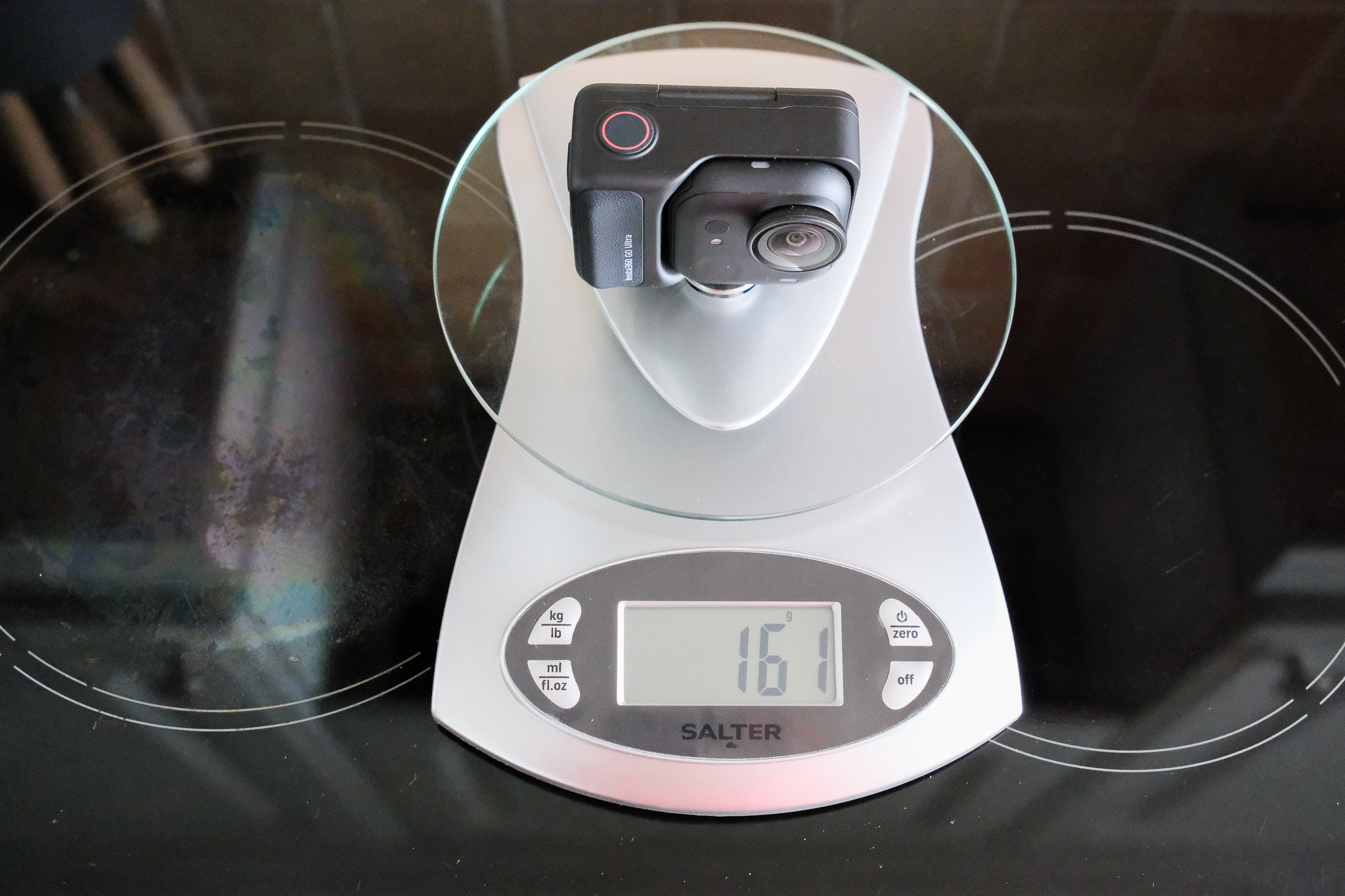
- Photo resolution: Up to 50MP (8192×6144, 4:3)
- Video resolution: Up to 4K60fps (16:9)
- Sensor size: 1/1.28"
- Aperture: f/2.85
- Max field of view: 156°
- Weight (Camera unit only): 53g
- Overall weight (GO Ultra + Pod): 161g
- Dimensions: 46 × 45.7 × 18.3 mm
- Run time: 70 mins (Standalone Camera), 200 mins (with Action Pod)
- Charging: 0–80% in 12 minutes (camera only), 18 minutes with Action Pod
- Display: 2.5" flip touchscreen on Action Pod
Design and build quality
Insta360 figured out its design language for its action cameras at this point, and as a result, the GO Ultra is distinctively GO-looking. It has a larger camera unit, and the dimensions aren’t exactly the same, but you can tell straight away it’s a GO camera by looking at it.
Action Pod
The black Action Pod looks remarkably similar to the GO 3S, with a large record button on the top and the two buttons – on/off Quick Action – and on its side. The camera release button has been moved slightly, and so has the microphone, which is now located on the same side as the camera release button.
The Action Pod is larger and heavier than before (108g vs 96g) and houses a larger, 2.5” flip display. The hinge has also changed, but the mechanism feels the same. Given the size difference, the GO Ultra uses different mounts than its predecessor.
For example, the optional quick-release mount clips into the bottom of the pod instead of the edges like on the GO 3S. The pendant accessory, which is included in the box, has also been updated and now supports an adjustable tilt, allowing users to fine-tune the camera’s angle for a more flattering POV.
Another notable difference between the GO 3S and the GO Ultra’s Action Pod is that the latter has a DSLR-like grip on the right. The leather-esque material certainly helps hold the camera in hand more easily, and it also looks great.
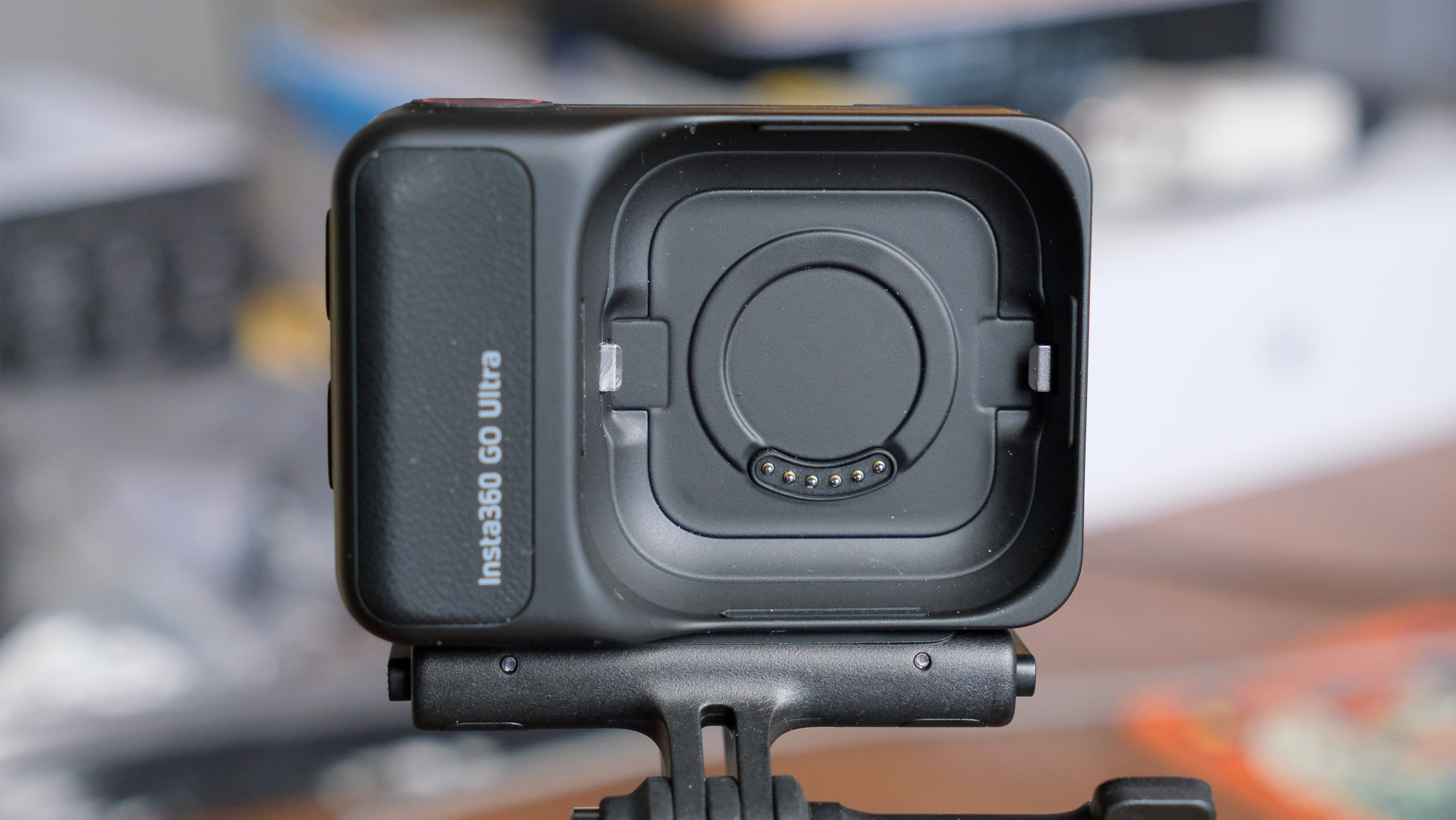
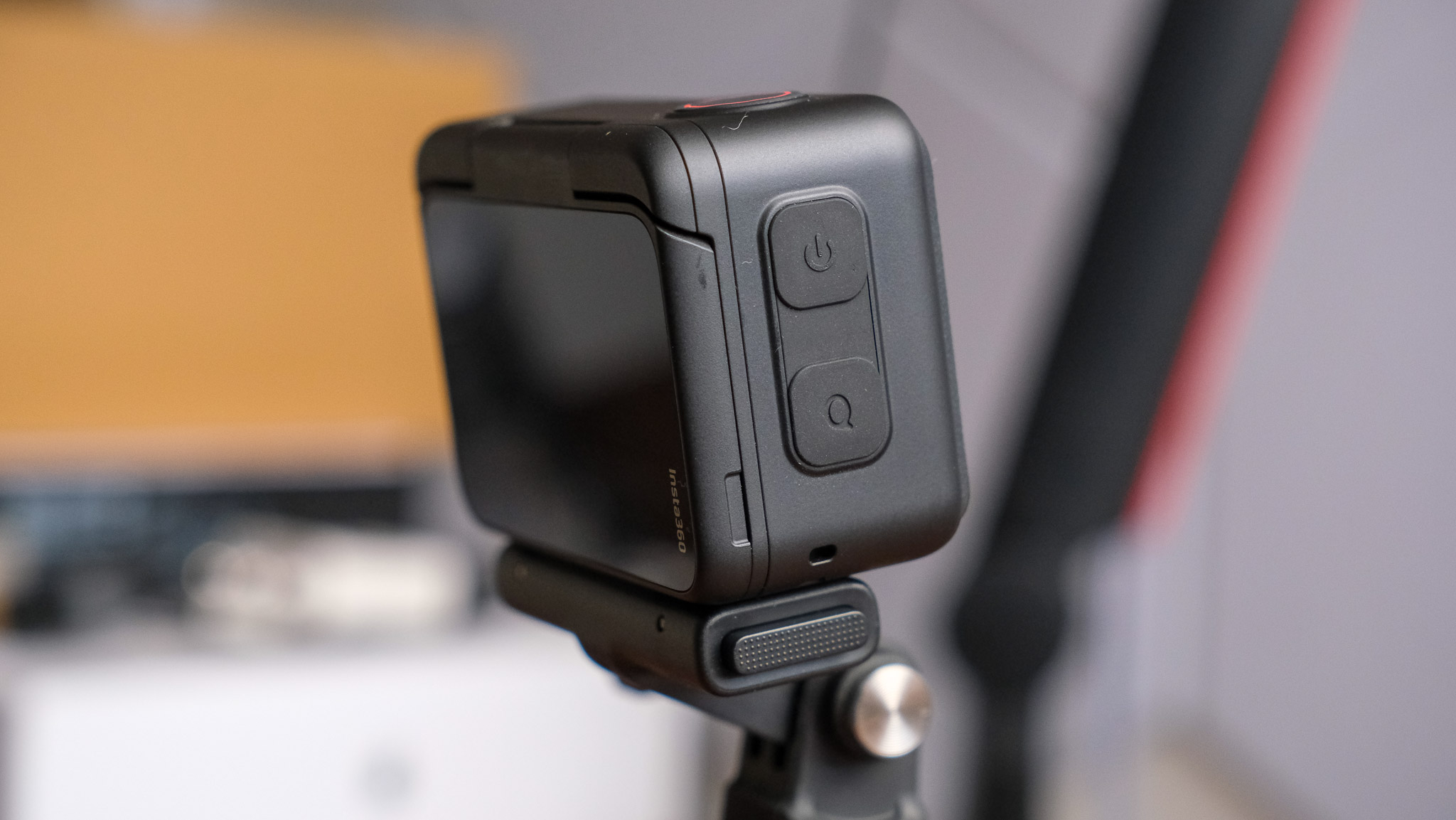
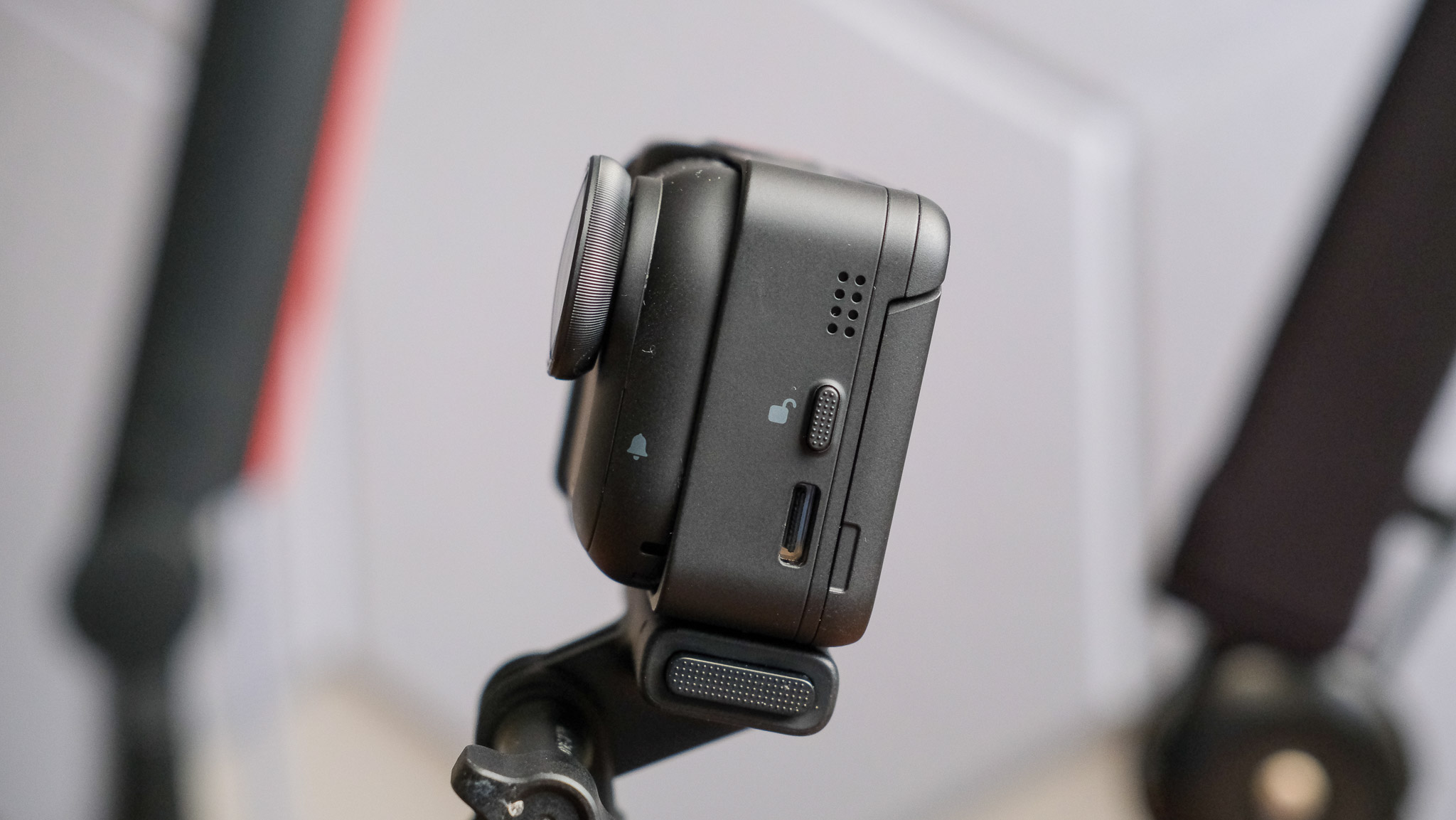
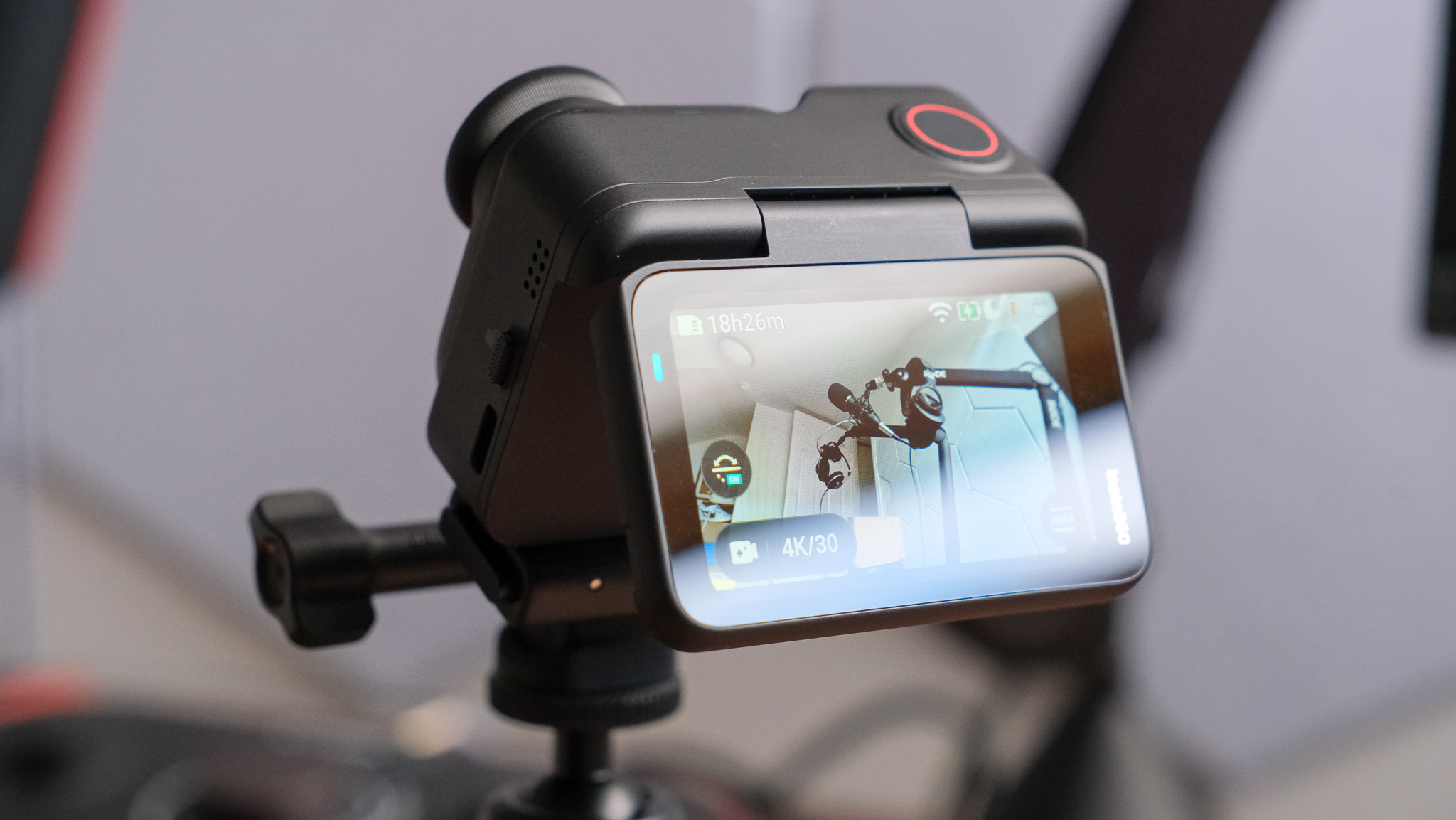
Camera unit
The GO Ultra – the camera unit itself – underwent profound changes. It’s larger and heavier than before (53g vs 39g) and has a more square form factor as opposed to the GO 3S’s pill shape approach.
It’s thinner, though, and despite the weight and size increase, it feels quite dinky still. It has two LEDs, one at the front and one at the top edge of the camera, which is supposed to help identify the orientation of the GO Ultra.
If the (edge) light is facing up, the camera is shooting in horizontal mode. If the light is on the side, it’s in vertical shooting mode. It is straightforward, but I wish Insta360 made it even easier to identify which mode the camera is shooting in by printing the words ‘vertical’ and ‘horizontal’ on the edges, so when I look at the GO Ultra, I can immediately tell where I’m at.
(Battery life has also increased, but I’ll take about that separately below.)

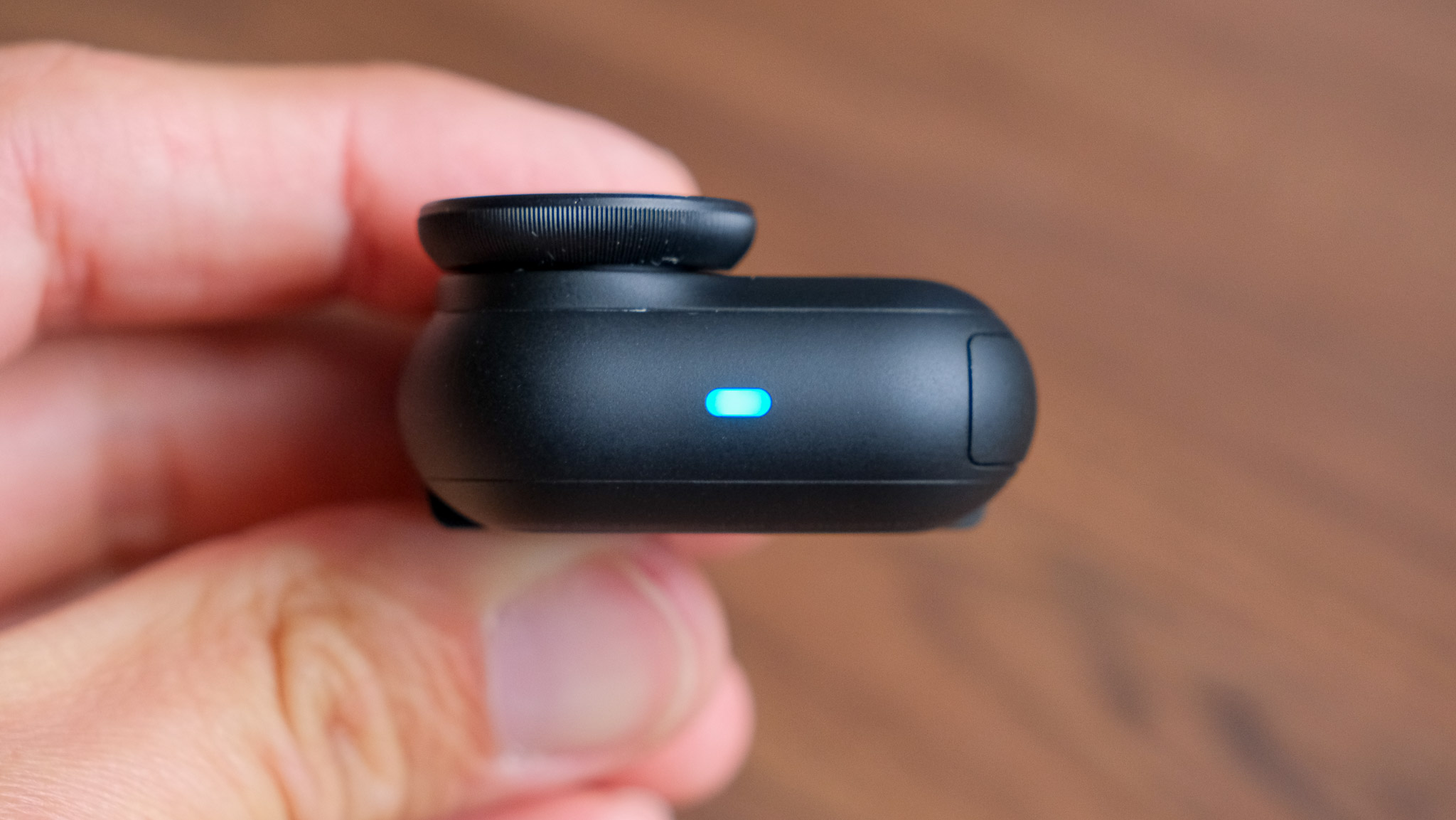
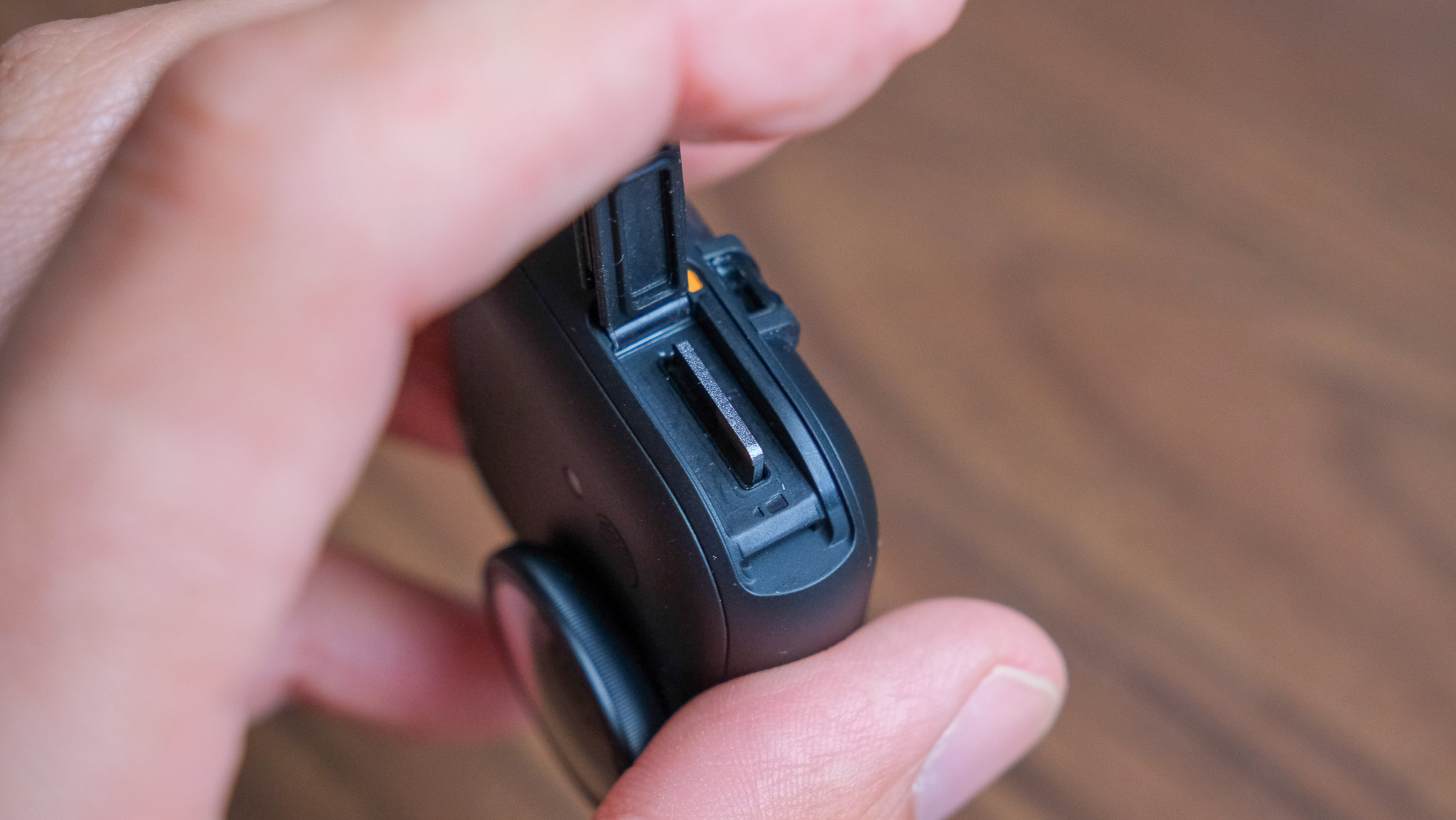
The sensor size has increased to 1/1.28" (from 1/1.23"), and the aperture is somewhat wider at 156° (vs 150°). Aperture stayed at f/2.85, but thanks to the larger sensor and the inclusion of the PureVideo Mode (more on this later), low light performance has increased.
A big-big update is that the GO Ultra now supports external (MicroSD) memory cards. This can be swapped on the GO, which reduces downtime when shooting. It’s a bit fiddly to install the card, especially for those with big hands like me – I had to press hard with my nail for the card to clip into place. Once you get used to the princess, it’s fine, though.
Features
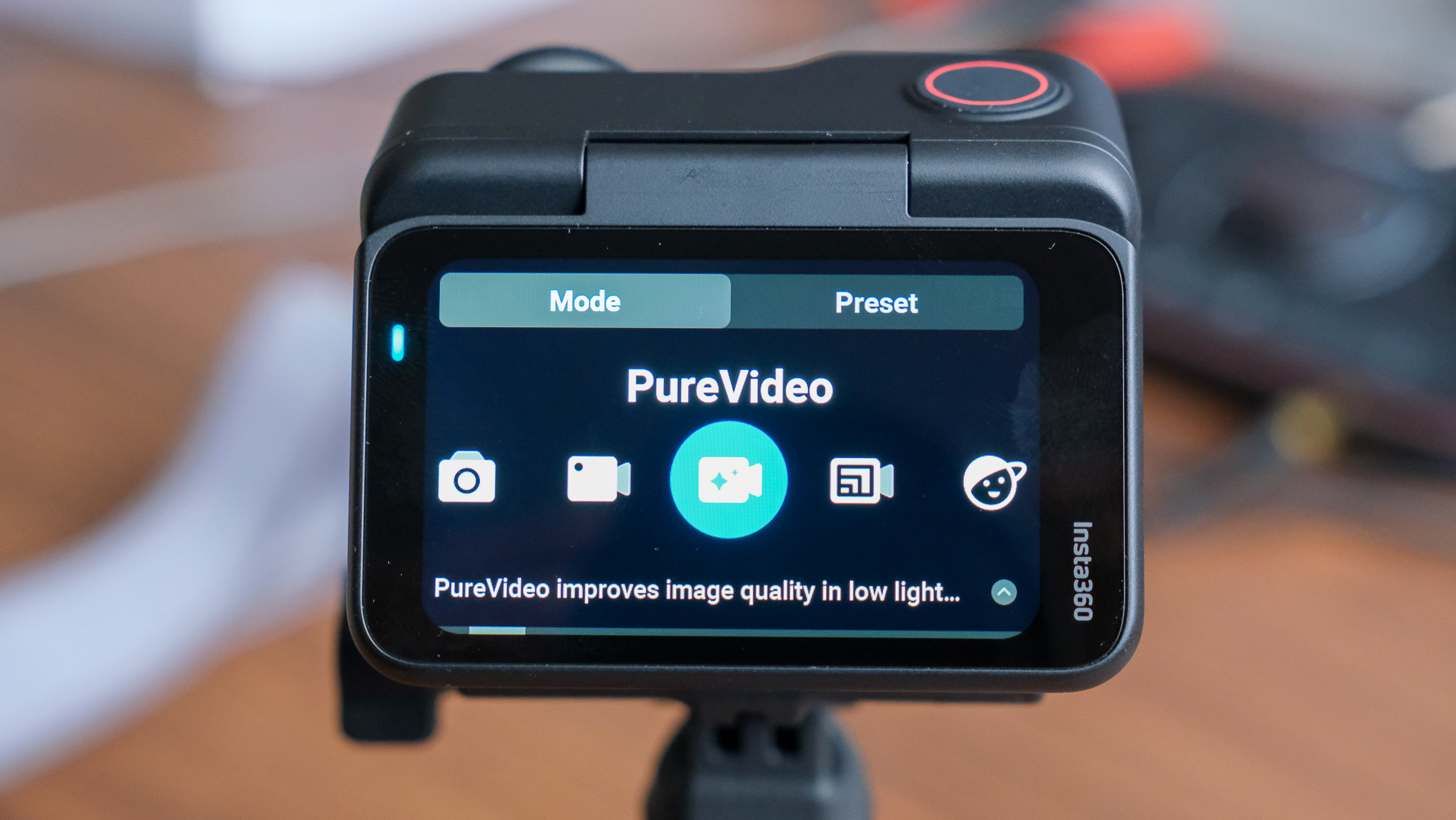
Insta360 cameras are as feature-rich as it gets, and the GO Ultra sports most of the shooting modes you expect to see on the brand’s devices, including standard video (up to 4K @ 60 fps, 2.7K @ 120 fps and 1080p @ 240 fps), FreeFrame Video (shoot-first, reframe-later), Timeshift, Timelapse (and Starlapse), Loop recording (a.k.a. dashcam mode), Slow Motion and Burst and Interval Photo modes.
On top of this, and thanks to the larger sensor, the GO Ultra can deliver 50MP stills (8192×6144, 4:3), a big upgrade from the GO 3S’s 4,000 x 2,250 pixels. Video frame rate has also been increased from 4K @ 30 fps to 4K @ 60 fps, as mentioned above.
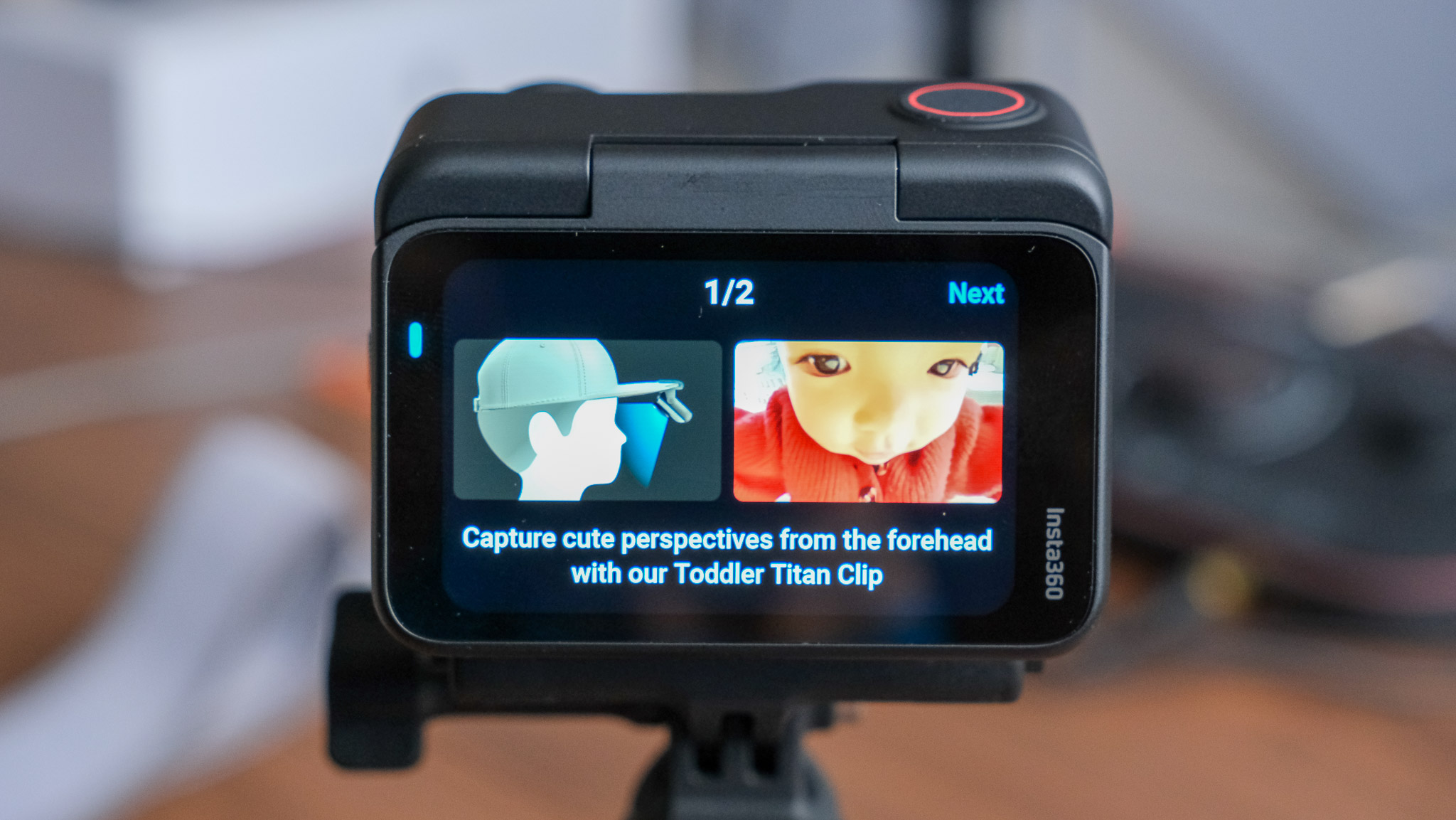
Active HDR Mode has been improved, and the GO Ultra is said to capture a wider dynamic range, balancing highlights and shadows in challenging lighting conditions. You will need to drop the frame rate down to 30 fps in 4K to apply this mode, but it helps reduce data loss in dark/bright areas of the frame.
Low light mode has been given a big boost thanks to the inclusion of PureShot Mode, borrowed from the Insta360 X5 (via the Insta360 Ace Pro 2). PureVideo is a dedicated low-light video mode powered by AI, designed to deliver brighter, clearer, and less noisy footage. Frame rate is capped at 4K @ 30 fps here, too.
Another feature borrowed from the Ace Series is the different filters and portrait enhancements. This includes "Glow" and "Selfie" filters tailored for skin tones and ambient colour boost, as well as smart in-camera portrait features to improve skin tone and facial detail without needing retouching.
Performance
The only real limit is how far your creativity can stretch when using the GO Ultra. It is small, IPX8 (up to 10m/ 33ft) waterproof, has a large sensor, an AI-enhanced chip, tons of shooting modes, and more – if you can think of a scene, you’ll likely be able to record it with the camera.
I took the GO Ultra swimming, exploring and even did workouts with it. As long as you have the appropriate accessories, the world really is your oyster. Footage is crisp and vivid, and thanks to the increased frame rate and larger sensor, you can watch back your videos on a 60” smart TV and it will still look GOod.
The only downsides of the GO Ultra are the same as the issues that arise while using any action camera. The bright, wide-angle lens doesn’t lend itself to anything but POV footage and landscape videos. Anything from three feet away looks quite dull and flat, due to the lack of depth of field and the algorithmic adjustments.
The GO Ultra is best used to capture unusual angles, like dropping it in a glass of water or the toaster. The classic, high-octane action shots (e.g. mountain biking, etc.) would also look perfect on it, but you don’t need to use a GO camera for that – any action camera, like a GoPro, can do that.
I used the pendant and the optional Easy Clip Headband, as well as any magnetic surface I could find, to record most of my footage. Because of the wide FOV and location of the headband, most of the videos I shot from that angle make me look like I’m a giant (I’m 6’1”).
The pendant provides a better angle, but you can’t do vigorous activities with it; otherwise, the footage will be shaky as the camera bounces up and down on your chest. For walking and general pottering around, that’s the best option, though.
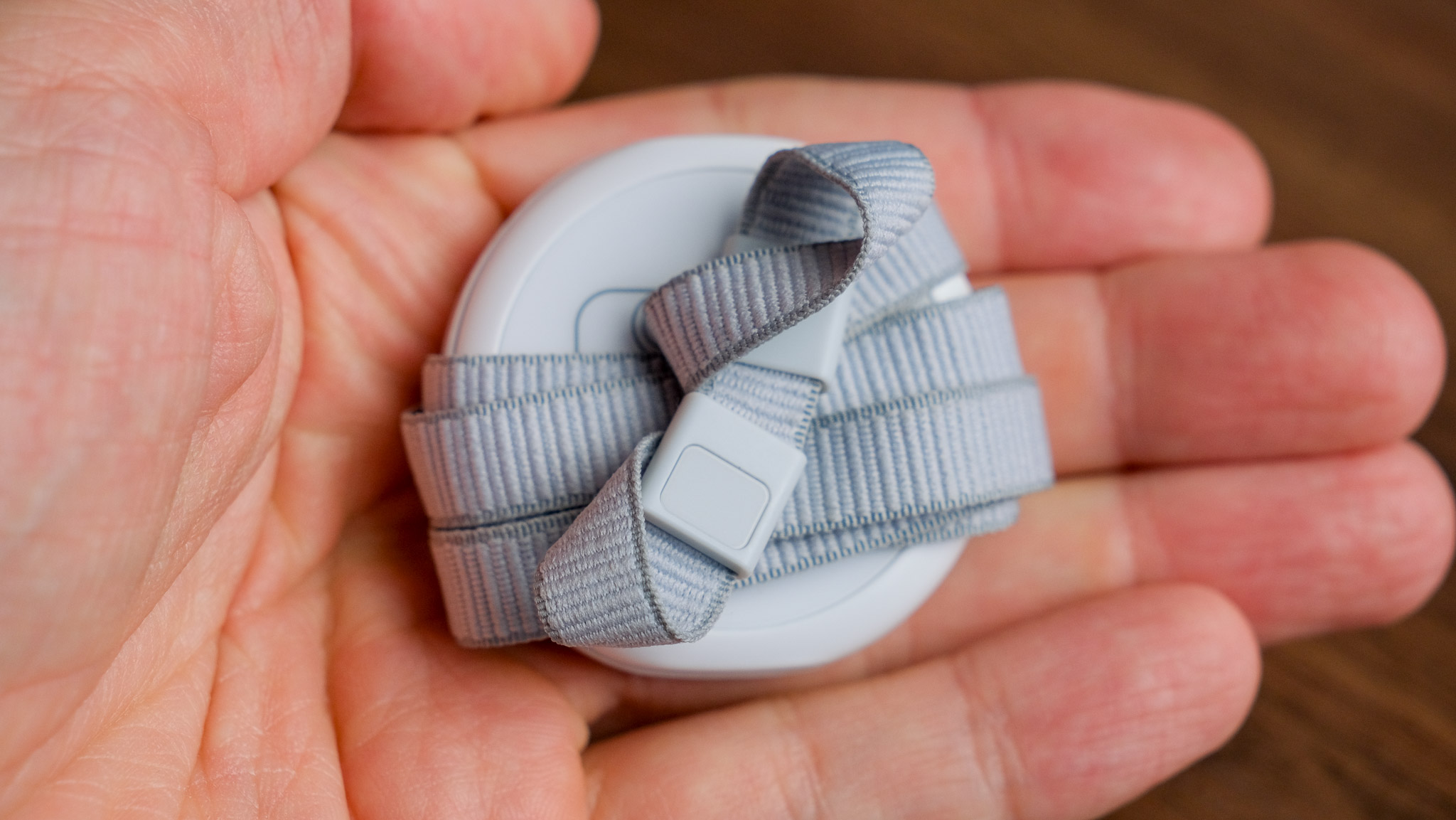
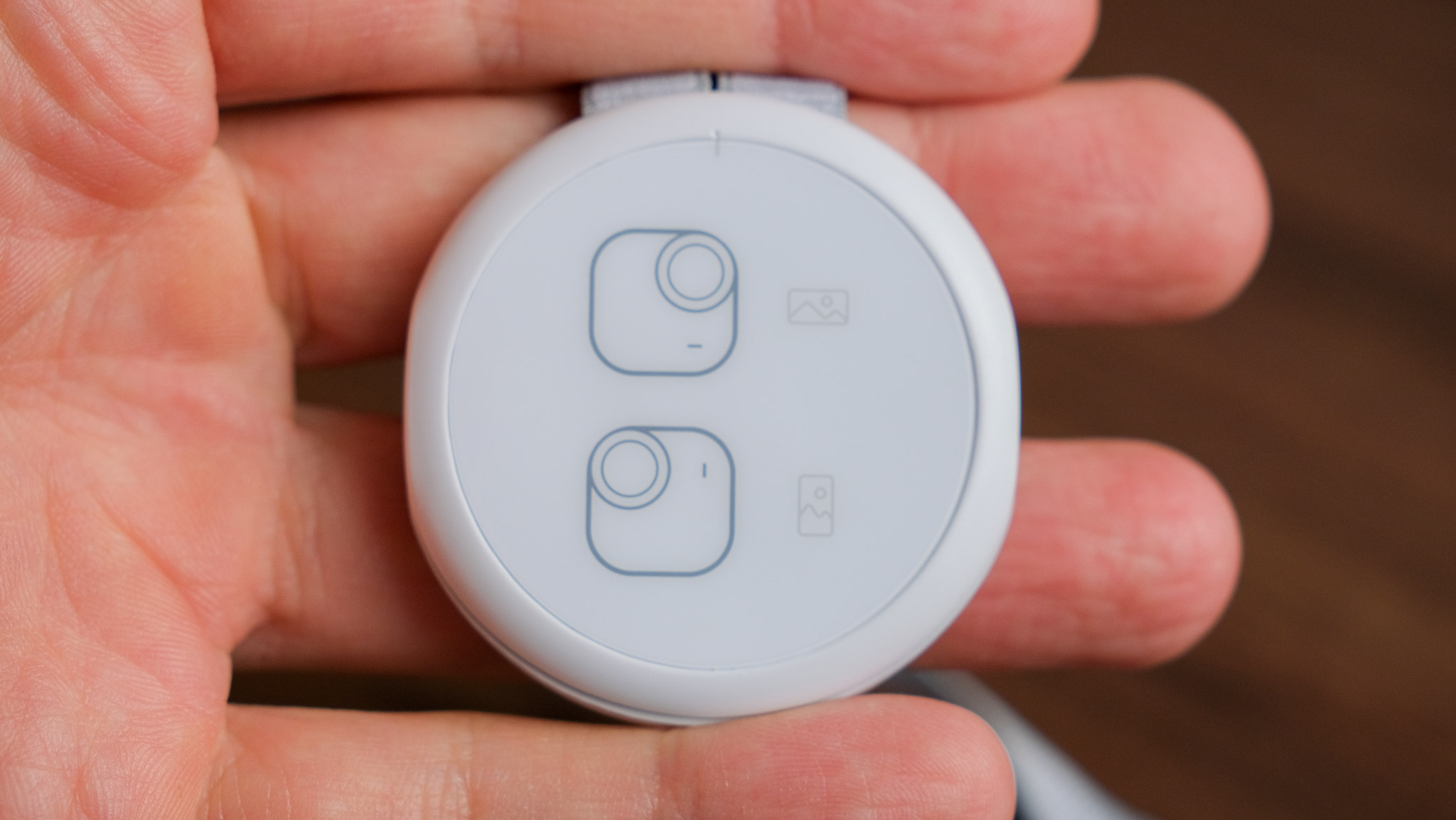
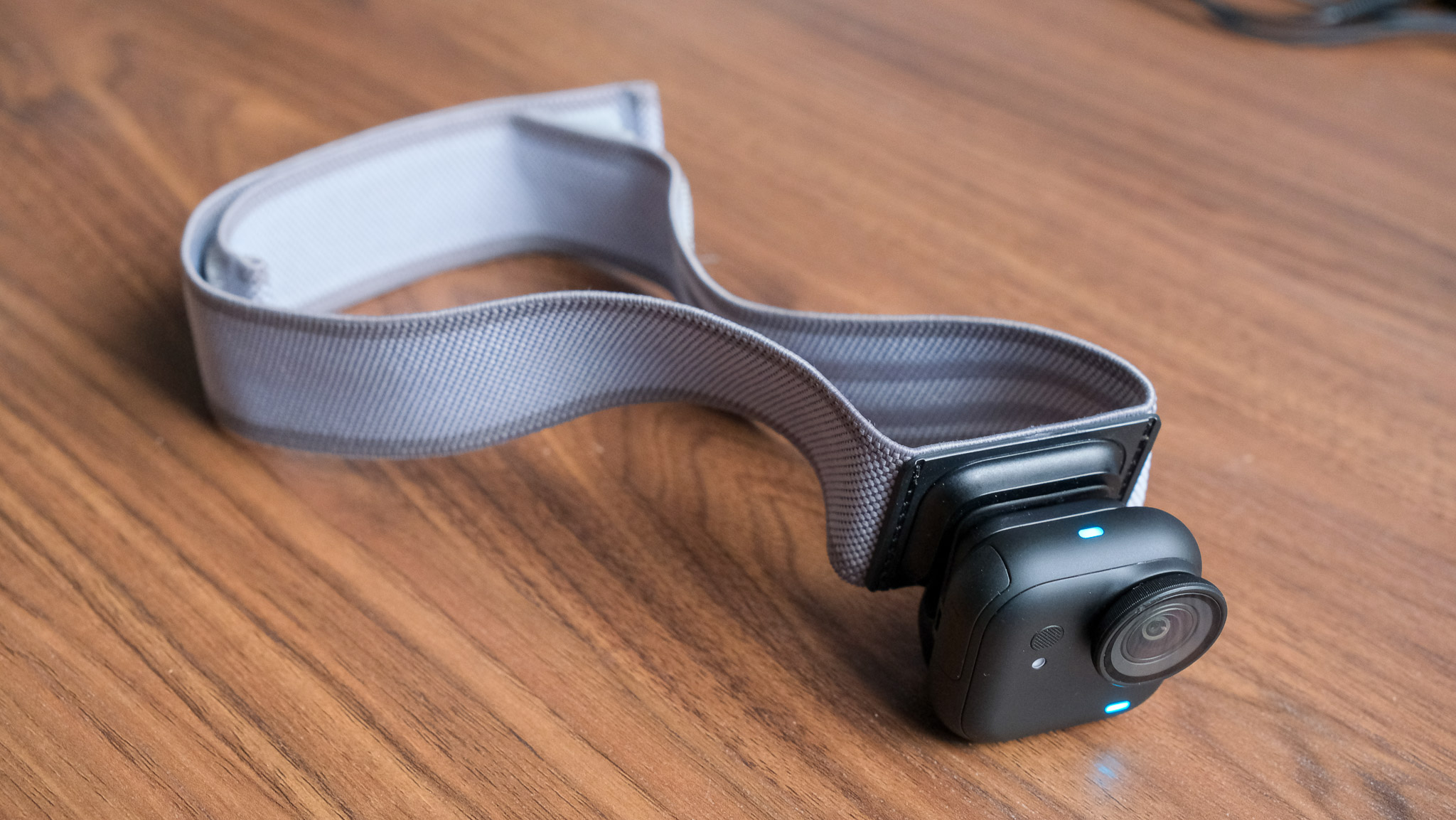
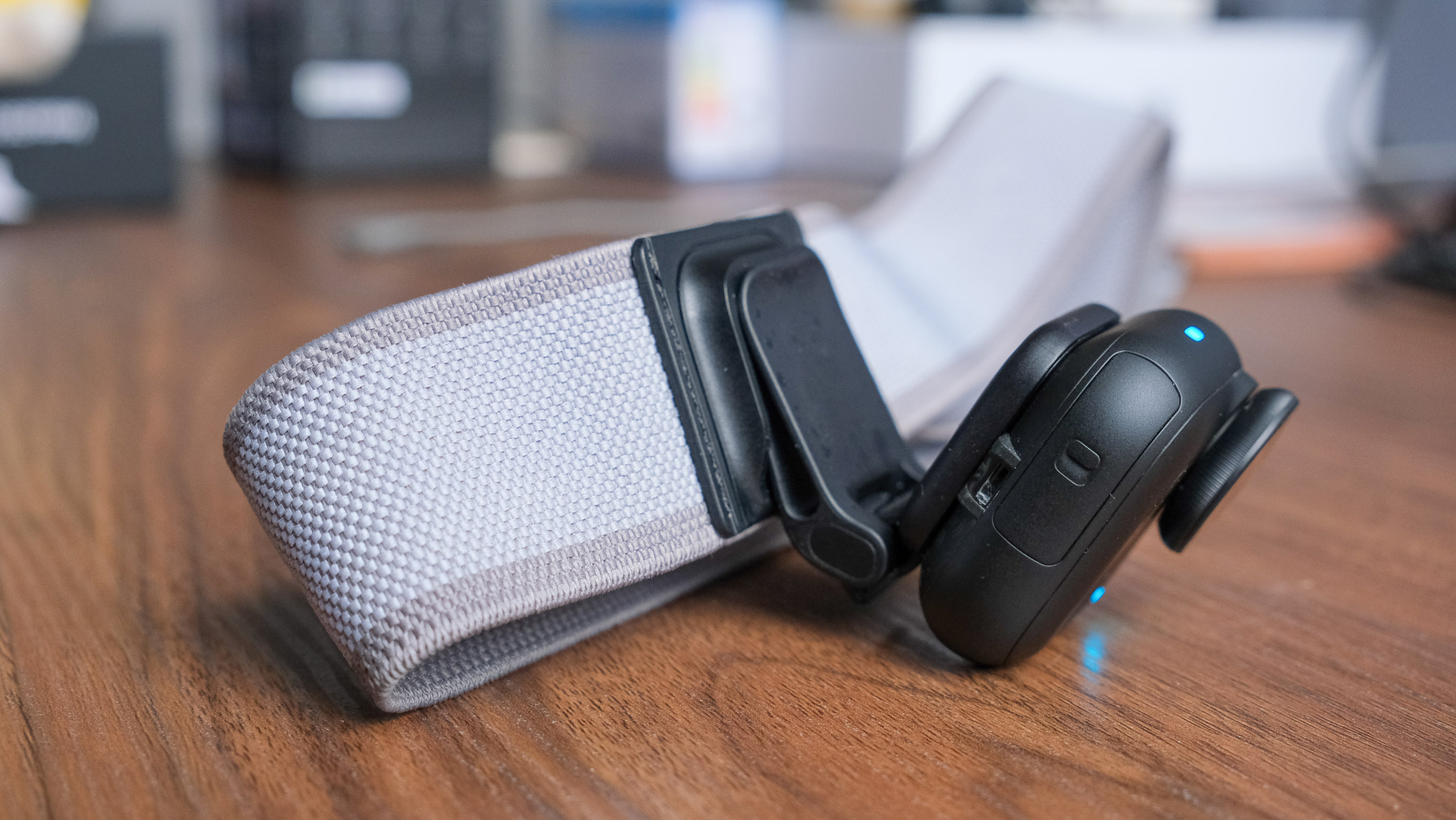
One thing I would have loved to see is an option to shoot vertical videos with the GO Ultra inside the Action Pod. With a square camera body, all you would need to do is rotate it 90 degrees in the Pod, and voila! Now, you have to rotate the whole camera – and potentially get an external mount – if you want to shoot vertical videos with the GO Ultra in the Action Pod.
Battery life
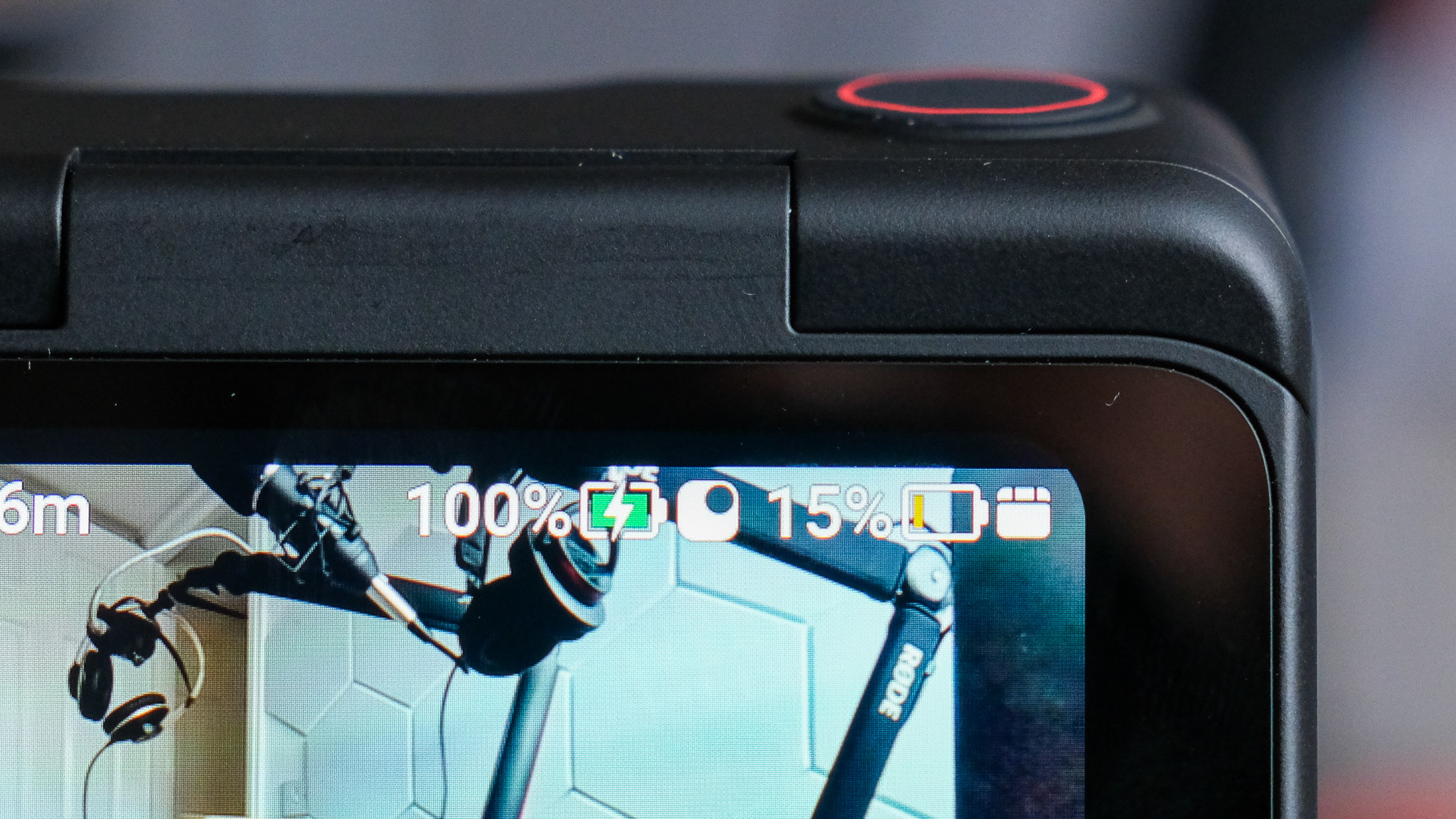
Battery life was one of the biggest complaints with previous GO models, and Insta360 clearly took that feedback to heart. The GO Ultra delivers a significant boost in runtime and charging speed compared to the GO 3S.
The standalone camera now lasts up to 70 minutes on a full charge, nearly double the 38-minute battery life of the GO 3S. Pair it with the Action Pod, and you’re looking at an impressive 200 minutes of shooting time before needing to top up.
Charging’s had a major glow-up, too. Thanks to a next-gen stacked-polymer battery design, the GO Ultra can hit 80% in just 12 minutes (camera only), or 18 minutes with the Action Pod, which is around twice as fast as the GO 3S, which needed 23 minutes (camera) or a hefty 47 minutes (with pod) to hit the same mark.
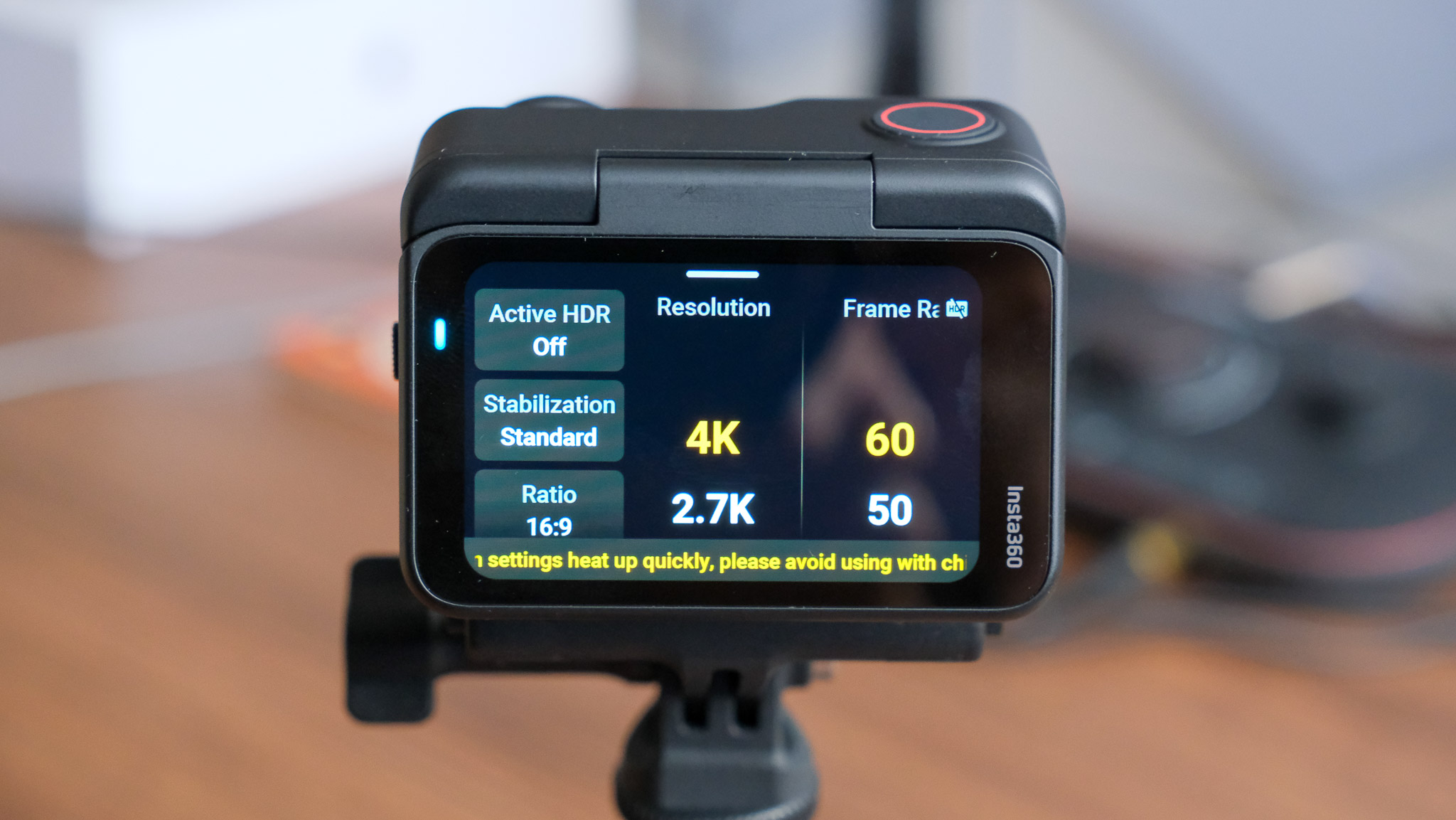
During testing, around 10 minutes of 4k @ 60 fps video recording ate up approximately 20% of the battery (GO Ultra outside the Action Pod). Heat also plays a role in battery life – the warmer the camera, the quicker the battery depletes.
It might be beneficial for Insta360 to look at the surface of the also compact GoPro Hero, which has a more textured, ridged exterior, designed to improve heat dissipation. A similar approach on the GO might improve overheating in higher framerates and resolutions.
Verdict
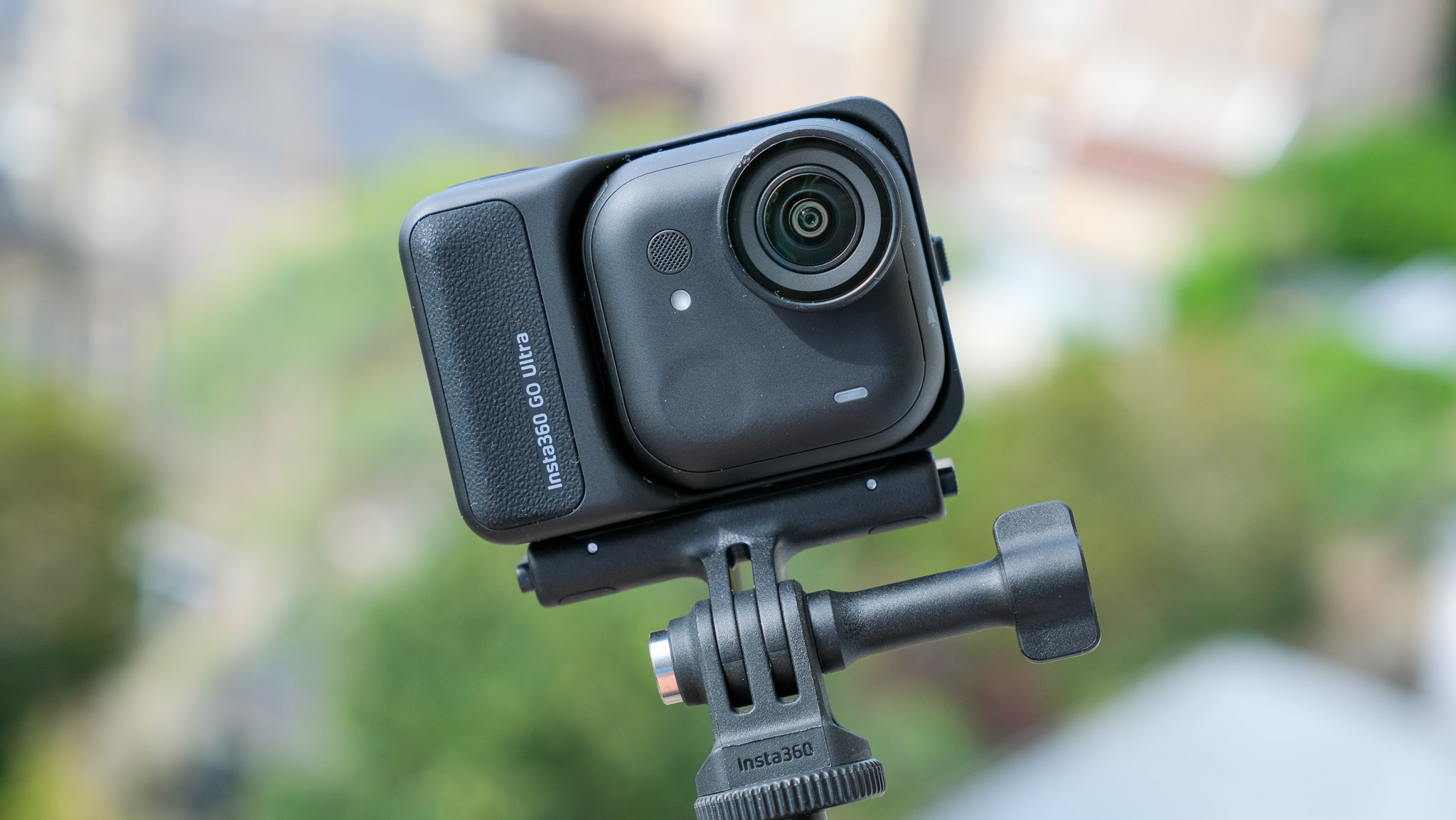
It’s both extremely easy and quite challenging to recommend the GO Ultra. It’s a brilliant little action camera that’s hardly any more expensive than its predecessor (at full price), yet offers a ton of improved functionality, longer battery life, and crisper, higher definition videos and photos.
On the other hand, the GO 3S only launched a year ago, and plenty of people were still happily using their GO 2; many hadn’t even made the jump to the GO 3, let alone the 3S. I do appreciate that Insta360 makes sure each new version is a genuine upgrade, not just a cosmetic touch-up, but the release pace is wild.
Of course, we must consider that the brand has a way to GO to establish itself as the go-to action camera brand as opposed to just being everyone’s fave 360-degree camera brand. DJI seems to be Japan’s top action cam brand (although that might be boosted by the incredible success of the Osmo Pocket 3), and GoPro still dominates the US.
One way innovative Chinese companies, such as Insta360, tackle this issue is through market saturation. DJI does this with its drones, and Insta360 is on track with its many products to do the same with action cams. It’s already dominating 360° cameras with its X Series, and the Ace Pro 2 is a true GoPro Hero rival.
The GO Series has been popular with creators, and with the GO Ultra, Insta360 is upping the game once again. It might be Going after a supposedly niche market – semi-professional/serious amateur content creators – but truth be told, there are more and more of those out there these days.
Do you need the Insta360 GO Ultra? If you feel restrained by the limitations of using your smartphone for content creation, you’ll love it. It’s much cheaper than a new iPhone, and although you can’t use it for calls, it will certainly help unlock your creativity in high resolution.

Matt Kollat is a journalist and content creator who works for T3.com and its magazine counterpart as an Active Editor. His areas of expertise include wearables, drones, fitness equipment, nutrition and outdoor gear. He joined T3 in 2019. His byline appears in several publications, including Techradar and Fit&Well, and more. Matt also collaborated with other content creators (e.g. Garage Gym Reviews) and judged many awards, such as the European Specialist Sports Nutrition Alliance's ESSNawards. When he isn't working out, running or cycling, you'll find him roaming the countryside and trying out new podcasting and content creation equipment.
You must confirm your public display name before commenting
Please logout and then login again, you will then be prompted to enter your display name.


